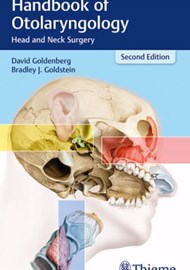The authors and contributors of this book have done a stellar job of updating the content while maintaining the portability essential for any ‘handbook’. They begin with a sound introductory section which presents a comprehensive road map to evaluating the ENT patient. This nicely sets the scene for the rest.
There was an overly generous section on anaesthesia drugs, though this may reflect the idiosyncrasies of American resident training. As a Brit, I did have to stop myself reviewing spellings of common words such as ‘apnea’ vs. ‘apnoea’. In the UK the Bjork flap is considered outdated in tracheostomy and instead it is more commonplace to create a tracheal window. I did hope to see the laws of masking (in audiology) providing the puzzled ENT junior doctor a crash course in grasping audiograms. This was a task I recall being quite painful as a trainee myself, only ameliorated by a brutal summary on said rules provided by a sympathetic audiologist.
I would have preferred that the term ‘granulomatosis with polyangitis’ was used instead of the historic ‘Wegner’s granulomatosis’ - this would have brought the text in line with modern day moral consciousness. As a head and neck surgeon, I found the section on head and neck surgery, including cancer, thyroid and salivary gland disease, quite comprehensive and nothing short of brilliant. It was truly a sign of the times to read a well-thought-out contribution regarding robotic surgery. The facial plastics section did well to include a write-up on aesthetic non-surgical interventions such as fillers, which I thought was very forward-thinking and would be especially informative for British trainees who are unlikely to encounter this information elsewhere in their curriculum. However, the ultra-smart nugget in this book is the appendix on procedures and methods of investigations: I can imagine many a resident glancing at these succinct instructions just before ploughing elbow deep into a real-life scenario.
I thoroughly recommend this book to all ENT trainees right here in the UK and, of course, across the pond in the United States. Bravo to all involved in its production!!





